“It’s not just the scenery—it’s the scale of it,” I said, staring out across a lake so still it looked painted. Canada made me feel small in the best way. Everywhere we went, there was space to breathe, to wonder, to go quiet for a while. Mountains folded into valleys without a sound. Forests held their green even in the cold. And the people we met—warm, steady, and unhurried—seemed to understand something about stillness that we were just learning.
We moved from west to east and sometimes far north, trading cities for cliffs, lakes for coastal trails, and the clatter of Toronto for the hush of Nunavut. Each place left its own mark—different weather, different pace, different stories—but they all offered one thing in common: the feeling of stepping into something bigger than yourself, and wanting to stay just a little longer.
Best Places to Visit in Canada:
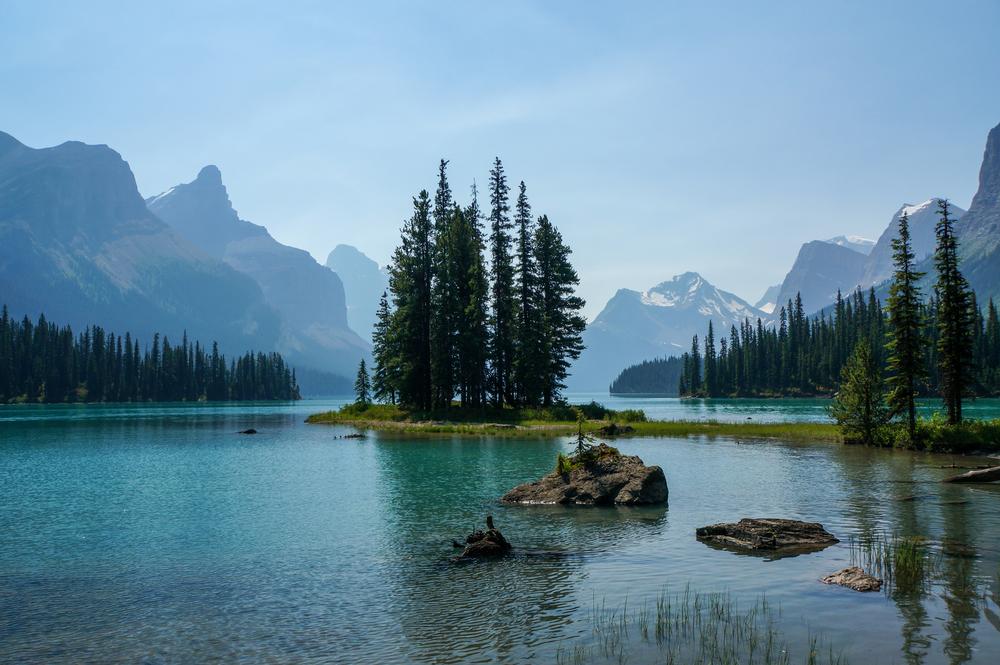
Maligne Lake: Still Water, Slow Time
We took the boat out early, the kind of morning where the water barely moved and even our voices felt too loud. As Spirit Island came into view—perched like a secret in the lake’s center—I thought, “This is what silence looks like.”
What I Loved Most: Watching the mountains ripple in the reflection, like the world was folded in half and floating.
My highlights? The cruise across Maligne Lake was quiet and cold, the air sharp with pine. We stopped for lunch back at the day lodge—hot tomato soup with herbs and a grilled sandwich that crackled at the edges, buttery and warm against the mountain air. Afterward, we followed the Mary Schäffer Loop Trail, crunching gravel and watching a single heron glide low over the water.
Plan your visit:
- Location: Jasper National Park, Alberta
- Vibe: Pristine, reflective, glacier-fed calm
- Best For: Boat rides, photography, alpine serenity
- Don’t Miss: Spirit Island cruise, lakeside hikes, wildlife spotting
- When to Go: Late spring to early fall for boat access and open trails
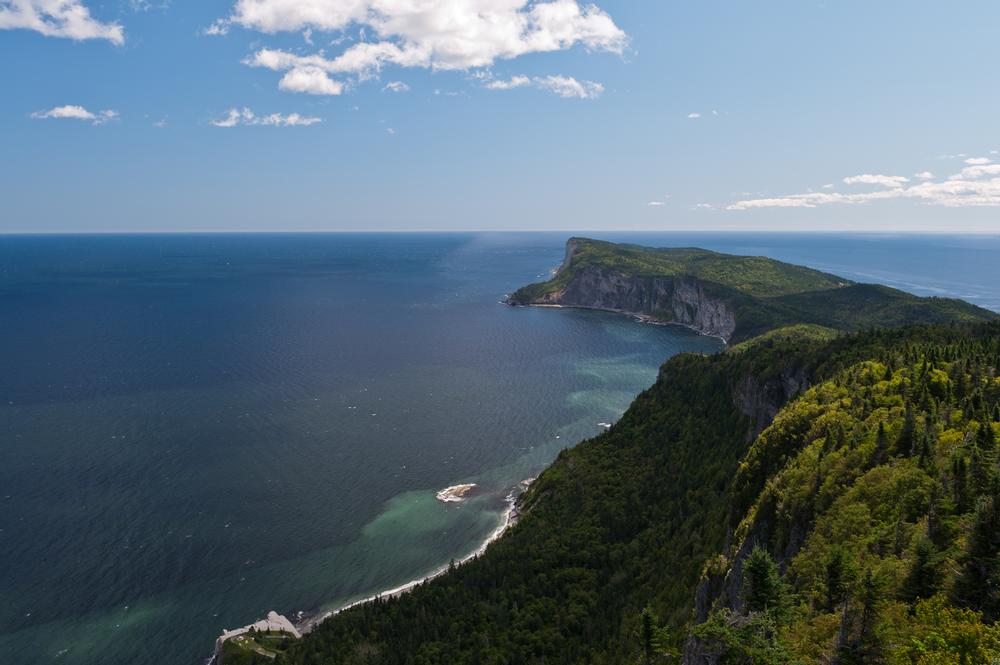
Forillon National Park: Where the Land Meets the Sea
Waves crashed against cliffs below me, and the wind tugged at my jacket as if to say, “Keep going.” Forillon felt wild but not untamed. It was the kind of place that asked you to listen—to gulls overhead, to the scrape of boots on stone, to your own breath rising in the cold.
What I Loved Most: Standing at the Cap Gaspé lighthouse, watching the land fall away into the Atlantic like a deep exhale.
My highlights? We hiked Les Graves trail early, mist still clinging to the trees, and spotted seals bobbing near the shore. Later, at a small roadside café just outside the park, I had a bowl of seafood chowder—creamy, briny, and full of tender whitefish and potatoes that tasted like they’d been dug up that morning. A warm biscuit on the side smelled like butter and salt air.
Plan your visit:
- Location: Eastern tip of the Gaspé Peninsula, Quebec
- Vibe: Coastal cliffs, remote and elemental
- Best For: Hikers, ocean-lovers, quiet seekers
- Don’t Miss: Cap Gaspé lighthouse trail, whale watching, pebble beaches
- When to Go: Summer and early fall for accessible trails and full services
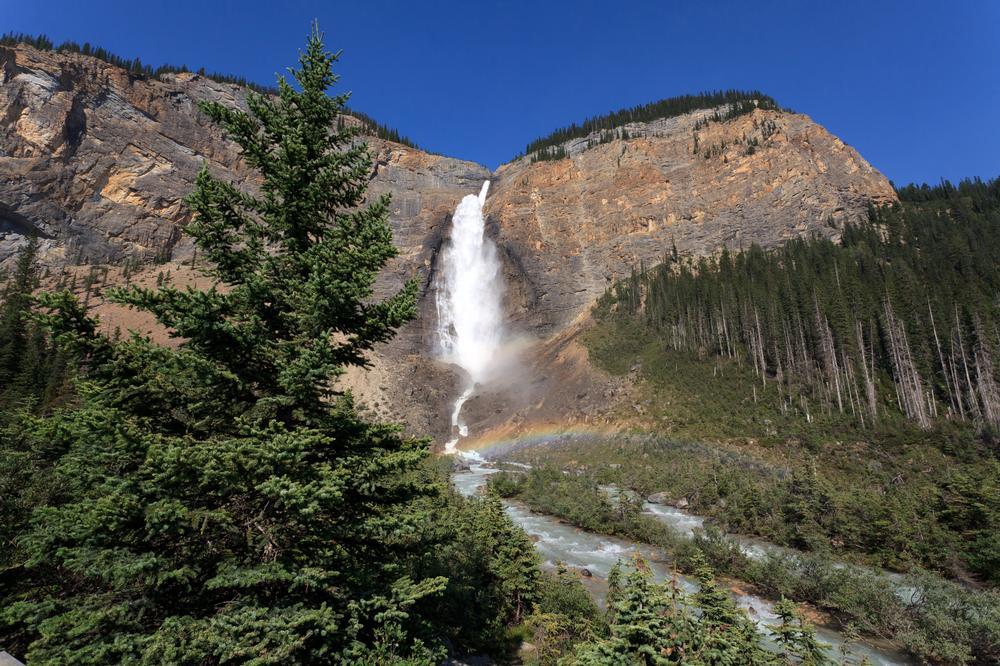
Takakkaw Falls: A Thunder You Can Stand Still In
We heard it before we saw it. The sound was low, steady—like wind wrapped in stone. Then the trees opened up and there it was: Takakkaw Falls, tumbling down the cliff face like it had somewhere to be. I stood in the mist and thought, “You don’t rush something this powerful—you just let it happen.”
What I Loved Most: Feeling the spray hit my face before I even reached the base of the falls, like the landscape had decided to greet me first.
My highlights? The short trail to the base was packed with pine scent and wet gravel, and every turn brought the sound closer. We brought sandwiches from a nearby café—smoked turkey with sharp cheddar and dill aioli—and ate at a picnic table within sight of the falls. The bread was still warm. The air was cold. It made the meal feel earned.
Plan your visit:
- Location: Yoho National Park, British Columbia (near Field, ~20 min from Lake Louise)
- Vibe: Towering, thunderous, humbling
- Best For: Waterfall lovers, photographers, quick but powerful hikes
- Don’t Miss: The base trail, picnic spots nearby, watching the light change on the cliffs
- When to Go: Summer to early fall when the access road is open and the falls are full
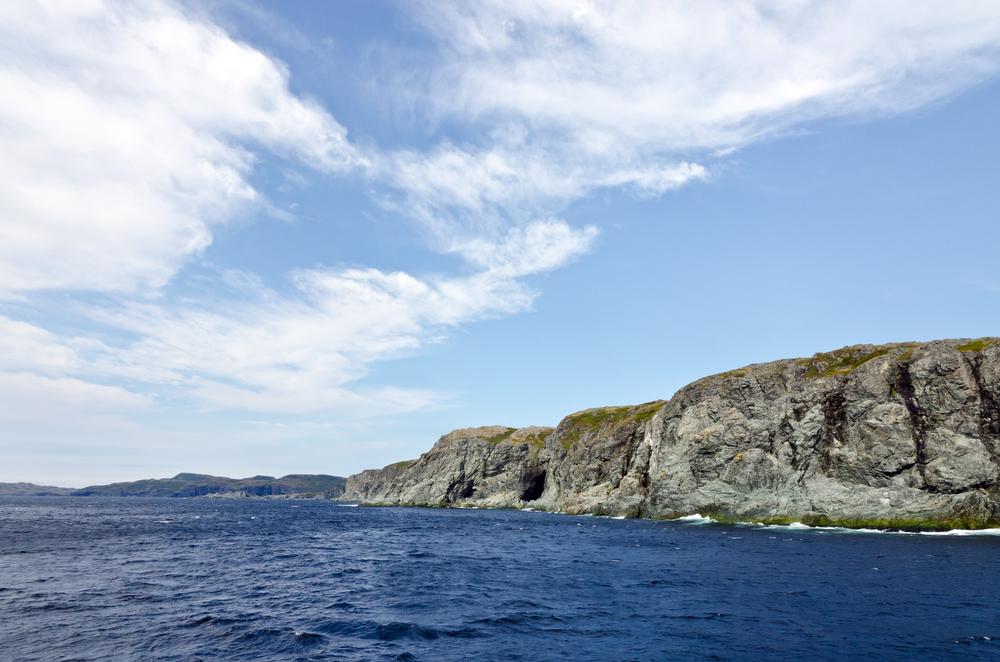
Newfoundland and Labrador: Edge of the Continent, Heart of the Story
“It feels like we’re standing at the end of something,” I said as we looked out over the Atlantic from a cliff near Cape Spear. But it didn’t feel lonely. It felt timeless. Newfoundland and Labrador stretched out like a song you didn’t want to end—waves against stone, fog curling through the hills, and towns that seemed stitched to the land itself.
What I Loved Most: The quiet resilience of the villages—colorful houses against grey skies, always facing the wind.
My highlights? We walked part of the East Coast Trail near Quidi Vidi, seabirds overhead and lichen-covered rocks beneath our feet. Lunch in St. John’s was salt cod cakes—crispy, golden, with the taste of brine and lemon—and a side of partridgeberry jam that added just the right sour-sweet bite. The room smelled like frying oil and cold air, and I didn’t want to leave.
Plan your visit:
- Location: Easternmost province in Canada, accessible via St. John’s or ferry routes
- Vibe: Remote, windswept, deeply storied
- Best For: Coastal hikes, maritime history, soulful quiet
- Don’t Miss: Cape Spear, Signal Hill, East Coast Trail, outport villages
- When to Go: Summer for weather and trail access; fall for solitude and color
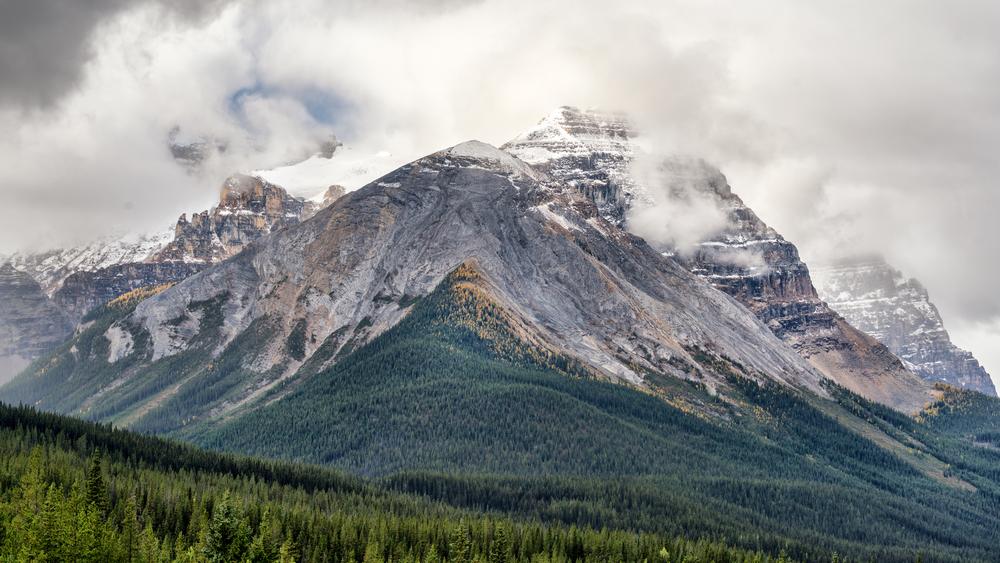
Golden, BC: Between the Mountains and the Sky
Golden felt like a place the world almost forgot—but nature remembered. I stood on a swinging bridge over the Kicking Horse River and thought, “There’s more sky here than I know what to do with.” The town sat in the cradle of six national parks, and everywhere we turned, the landscape pressed in close and vast all at once.
What I Loved Most: Hearing nothing but river and wind as we crossed into canyon silence on a morning hike.
My highlights? We explored the trails near Yoho National Park, then drove back into town hungry and sun-drowsy. At a café tucked near the rail tracks, I had elk chili—rich, slightly smoky, with cumin and tomato—and warm cornbread that fell apart in my hands. The windows fogged slightly from the heat inside. I let it linger.
Plan your visit:
- Location: Southeastern British Columbia, near Banff and Yoho
- Vibe: Rugged, authentic, surrounded by wilderness
- Best For: Hiking, river walks, scenic drives, small-town charm
- Don’t Miss: Kicking Horse Pedestrian Bridge, nearby parks, local wildlife center
- When to Go: Summer to early fall for hikes and alpine lakes; winter for skiing and snowshoeing
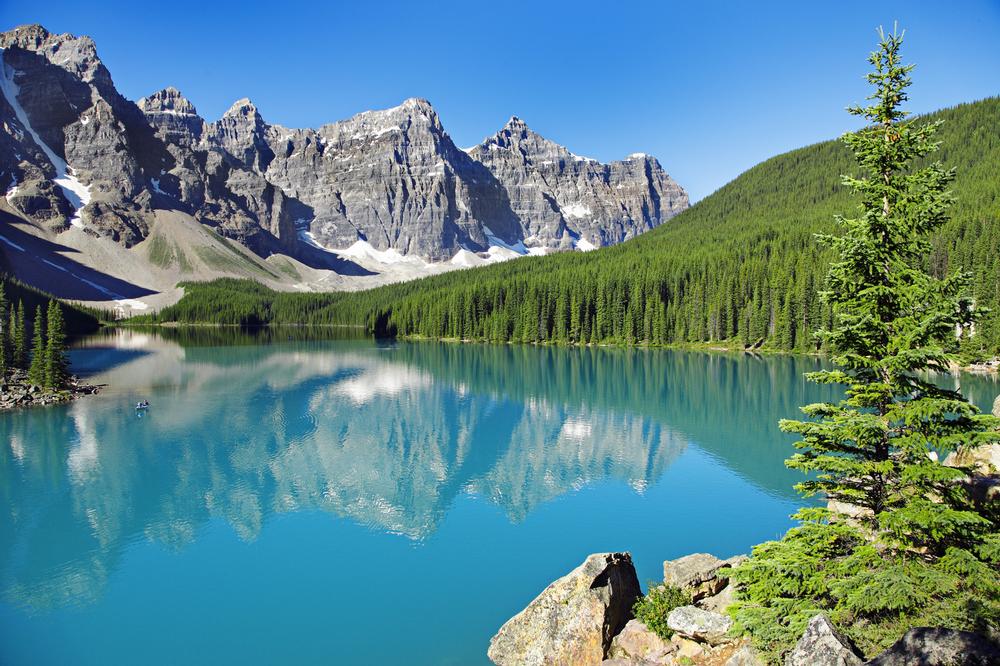
Lake Louise: Glacier Light and Mountain Stillness
The lake didn’t look real at first—just too blue, too still, too perfect. I leaned over the edge of the canoe and whispered, “This doesn’t feel like something we should be allowed to see.” Lake Louise held the sky like a mirror, the surrounding peaks standing like old guards at the water’s edge.
What I Loved Most: Watching sunlight catch in the glacial water while everything else—the crowds, the cold, the world—fell away.
My highlights? We paddled in the early morning when the wind hadn’t woken up yet. Afterward, we ate at the Chateau Lake Louise café—fresh croissants that smelled like warm butter, paired with wild berry jam, and a mug of hot chocolate so rich it felt like a meal. We sat by the window and just stared at the view. We didn’t speak much. We didn’t need to.
Plan your visit:
- Location: Banff National Park, Alberta
- Vibe: Iconic, peaceful, glacier-fed wonder
- Best For: Canoeing, photography, quiet mornings in nature
- Don’t Miss: Lake canoe rentals, lakeside stroll, afternoon tea at the Chateau
- When to Go: Summer for turquoise water; fall for crisp hikes; winter for snow-covered magic
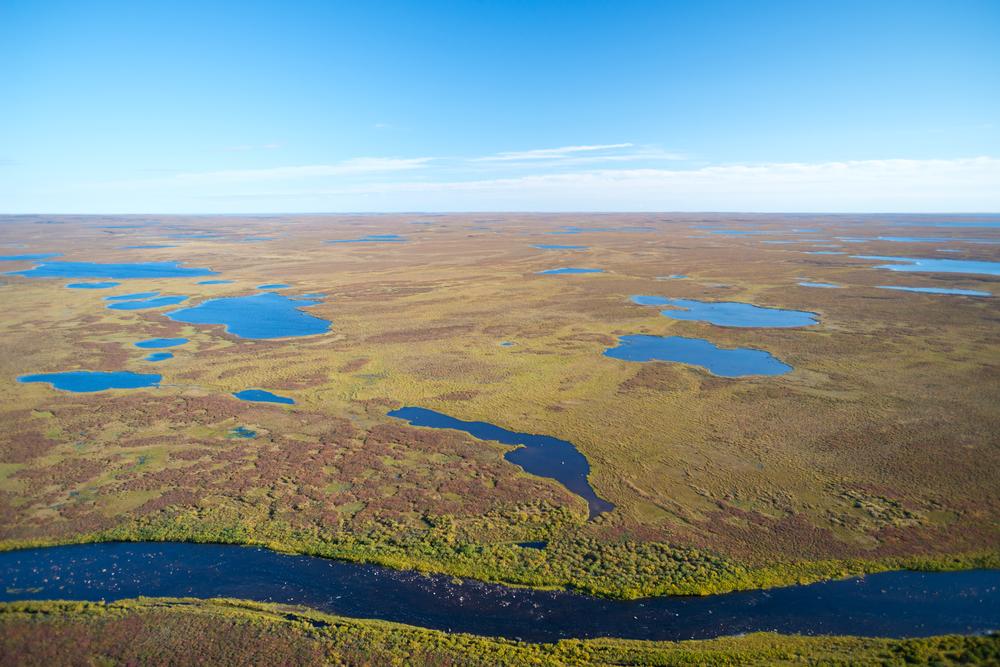
Nunavut
“We are visitors here—in every way,” I thought as we stepped onto the tundra. The land stretched farther than I could imagine, quiet in a way that felt sacred. Nunavut didn’t speak loudly. It didn’t need to. The silence said enough.
What I Loved Most: The stillness under the northern sky—no roads, no noise, just wind and wide-open air.
My highlights? We took a guided walk near the bay in Iqaluit, the ground soft and spongy beneath our boots, dotted with lichen and low flowers. A local café served fresh bannock with Arctic char—grilled, lightly salted, and full of clean, cold flavor. The bannock was warm and golden, slightly crisp on the outside, and it smelled like something handmade with care. We ate slowly, listening to stories from the north that lingered long after the meal was gone.
Plan your visit:
- Location: Far northern Canada, accessible by air (no roads in or out)
- Vibe: Remote, reverent, deeply rooted in Indigenous culture
- Best For: Cultural connection, stark landscapes, meaningful quiet
- Don’t Miss: Inuit art galleries, tundra walks, local guided tours
- When to Go: Summer for accessibility and daylight; fall for aurora and solitude
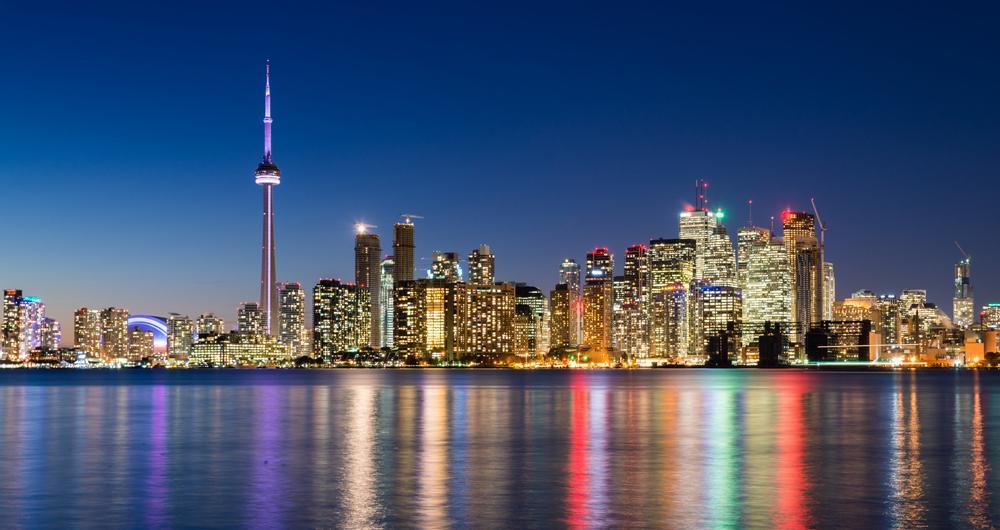
Toronto: Movement, Light, and Small Moments
I moved through Toronto on my own—no agenda, no hurry. “I can stop whenever I want,” I thought, standing in Kensington Market with a warm bun in my hand and street art stretching out behind me. The city buzzed, but I didn’t have to match its speed. That was the gift of being alone here—I could drift.
What I Loved Most: The rhythm of the neighborhoods—each one its own world, changing as easily as turning a corner.
My highlights? I started the morning walking the quiet trails of High Park, the scent of pine and damp leaves hanging in the air. Later, I took the ferry to the Toronto Islands, where the skyline looked softer across the water. At St. Lawrence Market, I had a peameal bacon sandwich—thick, salty, with a smear of mustard on a soft roll. It smelled like griddle heat and warm bread. I ended my day at Elmwood Spa, where the steam room wrapped around me like a pause. I didn’t stay long, but it was just enough to feel reset.
Plan your visit:
- Location: Southern Ontario, easily reached by train or plane
- Vibe: Multicultural, creative, quietly energetic
- Best For: Solo wanderers, museum lovers, food seekers
- Don’t Miss: Kensington Market, Toronto Islands, St. Lawrence Market, High Park, Elmwood Spa
- When to Go: Late spring to fall for outdoor exploring and café patios
Conclusion
What stayed with me wasn’t just the views—though Canada offered plenty. It was the feeling of standing still in a place that didn’t need to move fast. At Maligne Lake, the silence of water. At Forillon, cliffs that held the Atlantic like memory. In Newfoundland and Labrador, stories spoken through fog. Golden gave us rugged quiet; Lake Louise, a postcard we stepped into. Nunavut reminded us how small we really are. And Toronto? It showed us that even in motion, you can find pause.
Everywhere we went, there was space—for breath, for stillness, for something new between us. Canada didn’t just stretch across miles. It reached into us, gently, and stayed.
Jump to a Spot...
- • Maligne Lake: Still Water, Slow Time
- • Forillon National Park: Where the Land Meets the Sea
- • Takakkaw Falls: A Thunder You Can Stand Still In
- • Newfoundland and Labrador: Edge of the Continent, Heart of the Story
- • Golden, BC: Between the Mountains and the Sky
- • Lake Louise: Glacier Light and Mountain Stillness
- • Nunavut
- • Toronto: Movement, Light, and Small Moments


